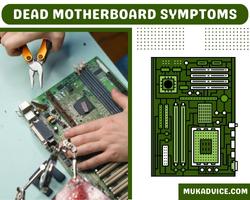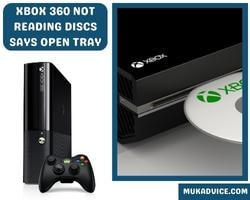A motherboard is the backbone of your computer, connecting and coordinating all the critical components, from your CPU to the RAM, storage, and even peripheral devices. But what happens when it stops working?
A dead motherboard can be a frustrating and confusing issue to deal with, especially since its failure can manifest in several ways. Your computer might refuse to turn on, freeze unexpectedly, or fail to recognize essential peripherals. It’s a problem that often leaves users feeling stuck and unsure of how to proceed.
Before you panic and assume your entire system is doomed, it’s important to know that not all motherboard issues are catastrophic. In fact, many of the symptoms of a dead motherboard can be diagnosed and addressed with a little troubleshooting.
This guide will walk you through the most common signs that your motherboard might be failing, what they mean, and how to troubleshoot them. Whether you’re dealing with a completely unresponsive computer or random system crashes, identifying the problem early can save you a lot of time, money, and stress.
Dead motherboard symptoms
So, if you’re ready to dive into understanding the symptoms of a dead motherboard, read on for some valuable tips and insights to help you get your PC back on track.
1. No Power or Boot-Up
When you press the power button, and nothing happens—no lights, no sounds, no fan whirring—this is often the most glaring sign of a dead motherboard. The motherboard is responsible for distributing power to all of the components in your PC, so if it’s not functioning properly, nothing will turn on.
What to Do:
- Check the power supply: Start by making sure the power supply is working. If possible, test the power supply with a multimeter or swap it with a known working one.
- Look for signs of damage: Check for visible damage like burnt areas or leaking capacitors on the motherboard.
- Test the power button: Ensure the power button is functional and properly connected to the motherboard.
If the power supply is working, but your PC still won’t turn on, it’s likely that the motherboard is at fault.
2. POST Beeps or Error Codes
When you try to start your computer and hear a series of beeps or see error codes on the screen, it’s often a sign that the motherboard is having trouble communicating with the hardware. These beeps or codes are diagnostic messages from the motherboard’s built-in POST (Power-On Self-Test) process.
What to Do:
- Refer to the motherboard manual: Each motherboard is different, so check the manual for the specific error codes or beep sequences.
- Reseat the RAM and GPU: Loose or improperly seated components can trigger error codes, so try reseating your RAM sticks and GPU.
- Test the motherboard: If you still get the same error codes after reseating everything, it’s time to test your motherboard more rigorously.
POST errors can be caused by a variety of factors, including a faulty motherboard, but they often indicate issues with memory, the CPU, or other critical components.
3. No Display or Black Screen
A common symptom of a dead motherboard is a black screen, especially if you’ve already confirmed the monitor is working. The motherboard is responsible for handling the video output, and if it fails, it could result in no display at all, even though the computer seems to be powered on.
What to Do:
- Test the display and cables: Confirm the monitor and cables are working. Connect your PC to a different monitor if necessary.
- Check GPU connections: If you’re using a dedicated graphics card, check that it’s properly seated and connected.
- Inspect the motherboard for damage: Check for burn marks or bulging capacitors near the graphics output section, which could indicate motherboard failure.
If your motherboard’s video output is damaged, a replacement might be necessary, especially if the motherboard lacks an integrated GPU.
4. Random Freezes and System Crashes
If your system is freezing unexpectedly, or you’re encountering random crashes, your motherboard could be struggling to handle the various components and signals it’s managing. The motherboard is like the brain of your PC, and if it fails, it can result in inconsistent power delivery or failure to communicate with your drives, RAM, or GPU.
What to Do:
- Check system temperatures: Overheating components can cause instability. Use monitoring software to check the CPU, GPU, and motherboard temperatures.
- Run hardware diagnostics: Use diagnostic software to run tests on individual components like memory, hard drives, and the CPU.
- Look for faulty connections: Ensure all cables and components are properly connected.
If the issue persists even after confirming the hardware is working well, a faulty motherboard could be to blame.
5. No Response from Peripheral Devices
A dead motherboard can also affect your computer’s ability to recognize peripherals. If your keyboard, mouse, USB devices, or other external hardware aren’t being recognized, the motherboard might be failing to process the signals from those devices.
What to Do:
- Test peripherals on another device: Ensure that your peripherals are functional by connecting them to another computer.
- Check for driver or OS issues: Sometimes the problem can be as simple as outdated or corrupted drivers. Try booting into safe mode to rule out OS problems.
- Inspect the motherboard’s I/O ports: Look for signs of physical damage, dirt, or corrosion around the USB ports and other connectors.
If no peripherals work and everything else checks out, a motherboard replacement might be needed.
6. Visible Physical Damage or Burn Marks
Motherboards are delicate, and physical damage can be a clear indication of failure. Look for scorch marks, burn damage, or leaking capacitors. These signs usually mean the motherboard has suffered a short circuit or power surge.
What to Do:
- Examine the board: Inspect the motherboard closely, especially around the CPU socket, RAM slots, and power connectors.
- Check for bulging or leaking capacitors: These are a common sign of damage due to electrical issues or overheating.
- Test the board’s functionality: Even if you see damage, try powering up the system. However, if the motherboard is severely damaged, it may no longer function properly.
Physical damage often signals that the motherboard can’t be repaired and must be replaced.
7. Overheating and Power Surges
If your computer is overheating or experiencing power surges, this can strain the motherboard, leading to possible failure. Excessive heat or electrical instability can damage the motherboard’s components, including the CPU and RAM slots, making the motherboard less likely to function correctly.
What to Do:
- Check the cooling system: Ensure that your fans and heat sinks are functioning and that the inside of your case is free from dust and debris.
- Install a surge protector: If your area has unstable power, using a surge protector or UPS (uninterruptible power supply) can help protect your motherboard from damage caused by electrical fluctuations.
Taking steps to prevent power surges and ensure proper cooling can prolong the life of your motherboard.
Conclusion
Dealing with a potentially dead motherboard can feel overwhelming, especially when your computer suddenly stops responding or behaves erratically. However, as we’ve discussed, there are several signs that can help you diagnose the issue before jumping to conclusions.
Whether your computer won’t power on, you’re hearing strange beeps, or your peripherals stop working, these symptoms are key indicators that your motherboard might be at fault.
The good news is that many motherboard issues can be resolved with careful troubleshooting sometimes all it takes is reseating a few components or swapping out faulty cables. However, if you’ve ruled out other possibilities and your motherboard is still unresponsive or physically damaged, replacing it may be the only solution.
Remember, understanding the symptoms of a dead motherboard and how to troubleshoot them is the first step in getting your computer back to working order.
If you’re unsure or uncomfortable performing some of these diagnostic steps yourself, don’t hesitate to reach out to a professional technician for help. A little knowledge and patience can go a long way in saving you time and money, and hopefully, you’ll get your PC up and running in no time!






